Sony Cyber-Shot DSC-RX100 hands-on review
These reviews are meant to give a personal, hands-on experience by a professional photographer, and do not go into all the equipment specifications readily available elsewhere on the internet.
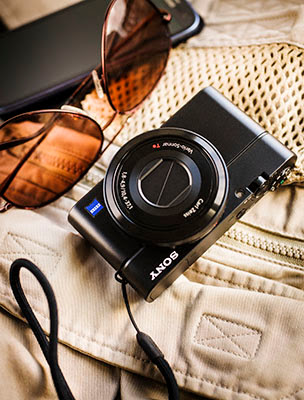 |
| Don't let its small size fool you. The Sony DSC-RX100 is capable of delivering pro-quality RAW images from an unassuming, small, point-and-shoot package. |
One of the holy grails of pro photographers has been a carry-around digital camera that is pocketable yet sophisticated enough to achieve pro quality image results. If that sounds like something you have been looking for, you may now be in luck. Sony's new Cyber Shot DSC-RX100 camera is similar in size to many point-and-shoot cameras, but comes with a large 1" sensor (same size as the sensor in Nikon's new CX series cameras), Carl Zeiss 28-100mm equivalent zoom lens, and is capable of supplying RAW image files. The other camera that comes to mind in this category is the Canon G1X. Although it has an even larger sensor, the G1X is also much larger and unnecessarily complex -- not something you are going to easily stuff into a shirt pocket.
Sensor size is the most defining contributor to digital image quality. The standard sensor put into most point-and-shoot cameras is 1/1.7". The 20.2MP RX100 1" sensor area is 2.76 times larger even though the camera itself is almost the same size as a point-and-shoot camera like the Canon S100. The base format of the RX100 is a 3:2 proportion, which is the same as 35mm full-frame cameras, but 4:3, 16:9, and my personal favorite, 1:1, are also available. I found myself setting the camera to shoot both RAW and jpg at the same time, and usually set the jpg image to be captured in the black and white creative style and 1:1 square crop. This way I have the jpg if I want it, while the RAW image remains in full 16-bit color with a full 3:2 size if I want to take advantage of it later.
 |
| Using the technique described above, this is what I see as I photograph using the black and white creative style and 1:1 square format, while I still capture the full RAW data in the image below in case I want to modify the image later. |
While it might have a look of point-and-shoot simplicity, the RX100 is equipped with plenty of conveniently placed pro options. A dial on top of the camera selects the shooting mode, which include the familiar M (manual), A (aperture priority), S (shutter priority), and P (full program) in addition to a simpler iAuto mode. The four focus modes include AFC (continuous), AFS (single-shot), MF (manual), and DMF (auto-focus with allowance for manual correction).
The lens is a Carl Zeiss f/1.8-4.9 zoom with a 10.4-37.1mm ( a 2.7 image multiplier factor gives a 28-100mm equivalent) optical range. The f/1.8 aperture is nice for low light but quickly fades to f/4.9 at the longer focal length. Furthermore, even at f/1.8 the 10.4mm short focal length does not yield much in the way of selective focus.
The menus are convenient and intuitive to use. The moveable ring around the lens can be programmed to sever different functions that are easily called up by the fn (function) botton on the rear of the camera. Frankly, this is one of the easiest cameras I have ever used and made all the more so by incorporating features that are most expected by professional photographers.
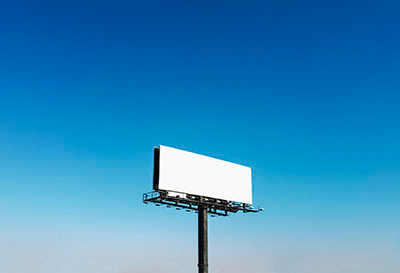 |
| Having the RX100 handy and quick to use allowed me to grab this stock photo from a moving taxi on a highway coming back from the airport. I had just enough time to roll down the window, point the camera, and click off a few frames. |
Normally, high mega pixels on a smaller sensor translates into excess noise at high ISO's. This camera has an ISO range of 100-6400. Frankly, I never use the highest rated ISO in any camera, even in the newest Nikon's which have the best high ISO of any camera out there. To achieve usable results for a stock image with a 1" sensor I try to keep the ISO as low as I can. That said, I did test the sensor at high levels and found that under some circumstances the RX100 could be pushed comfortably to ISO 1600 by applying post-processing noise reduction.
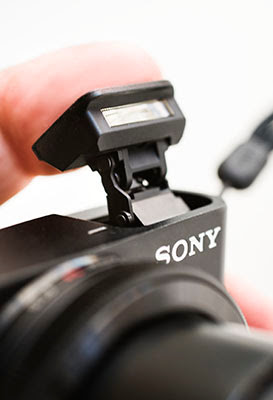 |
| The built-in, pop-up flash can be manually tilted. |
Another feature that will appeal to pros is how the built-in flash can be tilted with your finger to adjust the angle of the light to either bounce it off the ceiling or simply lift some of the light off of the foreground. Tilting it back just a bit takes enough light off the foreground to provide a more natural, even transition from front to back. Such a feature comes in handy when, for instance, you subject is sitting across a table from you an you want to add some fill light without burning the foreground with excess light.
 |
| This image was stitched together from two RAW photos to make a higher resolution panorama. |
While the camera does have its own panorama mode by stitching together images taken as the camera moves from side to side, I always prefer to create my own panoramas later in Photoshop. This achieves a much higher resolution image for several reasons. The built-in panorama is made up of jpgs, whereas my Photoshop assembled image can be made from RAW files. Plus the Photoshop assembled image adds together the resolution of the larger RAW files resulting in final photo that is much sharper with finer detail.
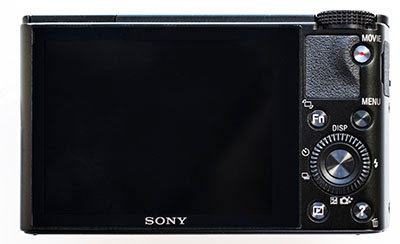 |
| The rear of the camera has a no-nonsense, easy to use layout, and large 3" LCD display. Pressing the Fn function button allows you to conveniently and quickly rotate through a series of seven commonly used menu choices that you can set yourself. I have it set to exposure compensation, ISO, auto-focus modes, crop format, and drive modes -- the features I change the most frequently. Once you are accustomed to it, this feature is very convenient. |
The camera sells for $648 (€500, or £400), which is expensive, and primarily due to the extra cost of the large sensor. The primarily cost in digital cameras is for sensor real estate, and this camera has a lot of it. I like to think that the cost is covered by the extra shots I will probably pick up by having this camera with me to grab spontaneous shots that I would otherwise miss. The photo of the blank bill board sign above is a case in point.
 |
| A shot like this pushes the limits of a this camera. It was taken in very low light at an ISO of 2500 with considerable technique to mimic an Instagram look added later in Photoshop. |
The close-up photo of the car meter above is exactly the
type of spontaneous photo I expect to pick up by having a camera like
this handy at all times. The shooting circumstances required a very high 2500 ISO. I applied a necessary noise reduction to the RAW image in Bridge before
bringing it into Photoshop. Even so, it required more noise reduction
before the image was acceptable as a 50mb file. As the adage goes, the best camera to use is the one you have with you. In many situations like this, this may be the only camera I have on hand. Yes, I could have relied on the camera in my mobile phone, but the results would not be anywhere near as good as can be obtained from a camera such as the Sony DSC-RX100.
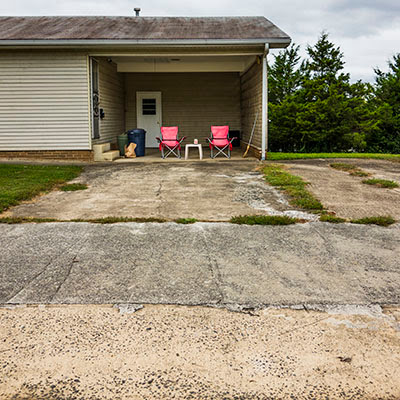 |
| By starting with a high 20.2MP resolution images retain detail even when cropped to a square format. |
Bottom line is: This camera is an overall winner. It isn't going to replace your full frame DSLR, but it will serve you well in a pinch when you just have to get the shot. And, yes, it does shoot HD1080 video.













Great post. Thanks for the recommendation!
ReplyDeleteThank you for the review, Tom. As you also own Fuji X100, how would you compare them both in terms of image quality?
ReplyDelete